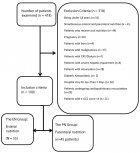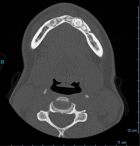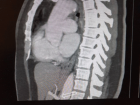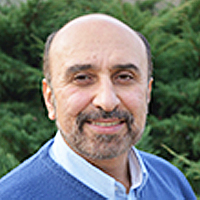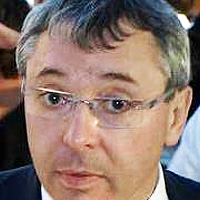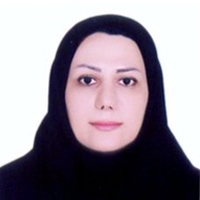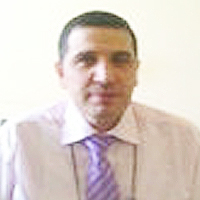Abstract
Research Article
Educational strategy to increase knowledge and risk perception about sexually transmitted infection in polytechnic students
Alba Cortes Alfaro* and Damarys Chacón O’farrill
Published: 19 March, 2020 | Volume 4 - Issue 1 | Pages: 001-004
Introduction: The incidence of STI-HIV/AIDS is on the rise, making adolescents a vulnerable group at risk.
Objective: To increase the knowledge and perception of risk about STI-HIV/AIDS, through Educational Intervention in students of the Polytechnic Institute ¨Hermanos Gómez¨ of the Municipality San José de las Lajas, Mayabeque Province.
Method: Quasi-experimental study, intervention at the ¨Hermanos Gómez Polytechnic Institute, of the Municipality of San José de la Lajas, through affective, participatory, animation and reflection techniques, the universe being made up of 17 students aged 16-17 years of specialty in Industrial Chemistry, during the period from December 2014 to November 2015. The variables used were: knowledge about STI-HIV/AIDS and perception of risk towards said diseases.
Results: after the intervention, an increase in the level of knowledge of the main STIs in the study was evident: Syphilis, Condylomas, HIV/AIDS, Gonorrhea, Trichomonas, Candida Albicans and Herpes simplex, which were adequately identified by 60%; 71% recognized the routes of sexual transmission, 60% the typical clinical manifestations, an increase in the levels of knowledge about the use of condoms to prevent STIs, and in the same way the perception of risk in an 83% after the intervention.
Conclusion: After the intervention, there was an increase in knowledge of STIs, transmission routes, clinical manifestations, condom use, and risk perception.
Read Full Article HTML DOI: 10.29328/journal.jcavi.1001004 Cite this Article Read Full Article PDF
Keywords:
Adolescence; Educational intervention; Knowledge of STI-HIV/AIDS
References
- World Health Organization. Sexually transmitted infections. Descriptive note. 2016.
- Ministry of Health of Costa Rica. Universal access strategy for male and female condoms. Costa Rica. 2013.
- World Health Organization. Global strategy for the prevention and control of sexually transmitted infections: 2006-2015: breaking the chain of transmission. USA. 2007.
- World Health Organization. Dealing with HIV in adolescence. 2013.
- Ministry of Public Health. Statistical Yearbook of Health 2017. Cuba. 2018.
- Statistical Health Yearbook 2016. Provincial Directorate of Health, Department of Medical Records and Health Statistics, Mayabeque. 2017.
- Torres Cueto, MA. Sexuality education and prevention of STIs and HIV/AIDS from gender, rights and sociocultural approaches. Basic, Pre-university, Professional and adult technical secondary education. Havana Ministry of Education. 2011.
- Ministry of Public Health. National Program. Methodological Manual. STI/HIV/AIDS Prevention Work. Havana: National Center for the Prevention of STIs/HIV/AIDS. MINSAP. 2009.
- Health Promoting Schools. The Central American Experience. 2017.
- Health Promoting Schools, Strengthening of the Regional Initiative, Strategies and Lines of Action 2003-2012. Central American. 2017.
- Rodríguez AB, Solernau MIA, Hernández SG, Martínez RM, Ravelo EM. Health promotion and self-care. In: Childcare in adolescence. Ministry of Public Health. 2014; 152-153.
- Chacón FD, Cortés AA, Álvarez GAG, Sotonavarro GY. Pregnancy in adolescence, its repercussion in the family and in society. Rev Cubana Obstet Ginecol. 2015; 41: 50-58.
- Chacón FD, Cortés AA. Educational intervention on sexually transmitted infections in health technology students. J Immunopathology. 2018; 1: 1.
- Wilfredo G, Maritza BA, María EV. Educational actions for responsible sexuality in adolescents from the university extension. Edumecentro. 2016; 8: 174-180.
- Guerrero BN, Pérez EM. Integral Education of sexuality in childhood, adolescence and youth. Conceptual approach. In Guerrero Borrego N. Reflections and views on sexuality in childhood, adolescence and youth. Havana. Cenesex. 2016.
- Cortés AA, García RR, Duque SI, Ochoa SA. Methodology for the prevention of STI-HIV / AIDS in adolescents and young people. National Center for STI / HIV / AIDS Prevention. Editorial Lazo Adentro. 2006.
- González PY, Morejón O, Morejón BY, Sevilla G. The school: a link in health promotion on the HIV epidemic. Conrado Magazine. 2015; 11: 42-47.
- Dessel AB, Kulick A, Wernik LJ, Sullivan D. The importance of teacher suport: differential impacts by gender and sexuality. Journal of adolescence. 2017.
- Horvath KJ, Bauermeister JA. Health Literacy and Intervention Tailoring Impacts the Acceptability of a HIV/STI Testing Intervention and Sexual Decision Making among Young Gay and Bisexual Men. AIDS education and prevention. 2017.
- Chelhond BA, Contreras VL, Ferrer LM, Rodríguez I. Impact of sexual education on the level of knowledge about contraceptive methods in two public institutions in a condition of semi-freedom and abandonment, Caracas, Venezuela. Risaralda medical journal. 2012.
- García CF, Malvarez CS, Scull SG, Govin SJA. Educational intervention on HIV/AIDS in a secondary school. Medimay. 2015; 21: 1812.
- Ortiz N, Rodríguez D, Vázquez M, Álvarez M, Sánchez L. Educational intervention on sexually transmitted infections in adolescents. Cuba. 2015.
- Fadragas A, Valdés M, Fernández L. Characterization of the level of information on STIs / HIV / AIDS in adolescents at the "José Luis Arruñada" basic secondary school. Rev Cub Comprehensive General Medicine. 2012.
- Newton DC, MccAbe MP. Sexually transmitted infections: Impact on individuals and their relationships. Journal of Health Psychology. 2008; 13: 864-869.
- García MK, Miranda TB. Educational intervention on sexually transmitted infections. Slaughters. Revméd electron. 2009; 31: 6.
- González G, Hoyos M, Martínez L, González I, Lama A. Educational intervention on ITS-VHI / AIDS in students of pre-university education. IPVC Carlos Marx. Rev. Med. Electrón. 2010; 32: 5.
- Chacón OD, Cortes AA. Educational intervention for the Prevention of Sexually Transmitted Infections in Adolescents in Seventh Grade Adolescents. Biomed J Sci & Tech Res. 2019; 18: 13904-13911.
- García ANE, Valdés VAC, Gutiérrez MAJ, Pérez LJ, Aranda RR. Sexual behavior of risk of infection by HIV/AIDS in first year medical students. Rev Cienc Méd. 2011; 15: 7.
- Sarmiento OM, Gómez OI, Ordaz GAM, García DCD, Casanova MMC. Educational intervention strategy in sexually transmitted diseases. Rev Cienc Méd. 2012; 16: 9.
- Dutra SG, Rubin PEN, Ressel LB, Deitos VME. Sexuality of adolescents living with HIV/AIDS: information sources delimiting learning. 2018; 22: e20170120.
- Ortiz Sánchez NL. Sexually transmitted infections: educational intervention in adolescents from a professional technical education school. Medwave. 2014; 14: e5891.
- García R, Canino J, Cruz M, Barbé A, García M. Sexually Transmitted Infections: Educational Intervention in Adolescents of School of Professional Technical Education. Medwave. 2014; 5891.
Figures:
Similar Articles
-
Educational strategy to increase knowledge and risk perception about sexually transmitted infection in polytechnic studentsAlba Cortes Alfaro*,Damarys Chacón O’farrill. Educational strategy to increase knowledge and risk perception about sexually transmitted infection in polytechnic students. . 2020 doi: 10.29328/journal.jcavi.1001004; 4: 001-004
-
Male in Early Adolescence Presenting with Guillain-Barré Syndrome Following BECOV2D VaccineVinit Suri*, Kanika Suri, Kunal Suri, Priyal. Male in Early Adolescence Presenting with Guillain-Barré Syndrome Following BECOV2D Vaccine. . 2023 doi: 10.29328/journal.jcavi.1001010; 7: 001-004
Recently Viewed
-
Navigating Weight Management with Stevia: Insights into Glycemic ControlShashikanth Kharat*, Sanjana Mali*. Navigating Weight Management with Stevia: Insights into Glycemic Control. New Insights Obes Gene Beyond. 2024: doi: 10.29328/journal.niogb.1001021; 8: 006-008
-
Screening for Depressive Symptoms in Clinical and Nonclinical Youth: The Psychometric Properties of the Dutch Children’s Depression Inventory-2 (CDI-2)Denise Bodden*. Screening for Depressive Symptoms in Clinical and Nonclinical Youth: The Psychometric Properties of the Dutch Children’s Depression Inventory-2 (CDI-2). Insights Depress Anxiety. 2025: doi: 10.29328/journal.ida.1001047; 9: 028-039
-
The Bacteriological Profile of Nosocomial Infections at the Army Central Hospital of BrazzavilleMedard Amona*,Yolande Voumbo Matoumona Mavoungou,Hama Nemet Ondzotto,Benjamin Kokolo,Armel Itoua,Gilius Axel Aloumba,Pascal Ibata. The Bacteriological Profile of Nosocomial Infections at the Army Central Hospital of Brazzaville. Int J Clin Microbiol Biochem Technol. 2025: doi: 10.29328/journal.ijcmbt.1001032; 8: 009-022
-
Indian spices and Caffeine treatment for Obesity and Cardiovascular diseaseIan James Martins*. Indian spices and Caffeine treatment for Obesity and Cardiovascular disease. Ann Clin Endocrinol Metabol. 2018: doi: 10.29328/journal.acem.1001005; 2: 010-014
-
Intravenous Leiomyomatosis of the Uterus with Intracardiac ExtensionTomas Reyes-del Castillo*,Minerva I Hernandez-Rejon,Jose L Ruiz-Pier,Mario Peñaloza-Guadarrama,Carlos E Merinos-Avila,Cristina Juarez-Cabrera,Pedro A del Valle-Maldonado,Sofia Ley-Tapia,Valentín Gonzalez-Flores. Intravenous Leiomyomatosis of the Uterus with Intracardiac Extension. Arch Vas Med. 2025: doi: 10.29328/journal.avm.1001021; 9: 003-007
Most Viewed
-
Impact of Latex Sensitization on Asthma and Rhinitis Progression: A Study at Abidjan-Cocody University Hospital - Côte d’Ivoire (Progression of Asthma and Rhinitis related to Latex Sensitization)Dasse Sery Romuald*, KL Siransy, N Koffi, RO Yeboah, EK Nguessan, HA Adou, VP Goran-Kouacou, AU Assi, JY Seri, S Moussa, D Oura, CL Memel, H Koya, E Atoukoula. Impact of Latex Sensitization on Asthma and Rhinitis Progression: A Study at Abidjan-Cocody University Hospital - Côte d’Ivoire (Progression of Asthma and Rhinitis related to Latex Sensitization). Arch Asthma Allergy Immunol. 2024 doi: 10.29328/journal.aaai.1001035; 8: 007-012
-
Causal Link between Human Blood Metabolites and Asthma: An Investigation Using Mendelian RandomizationYong-Qing Zhu, Xiao-Yan Meng, Jing-Hua Yang*. Causal Link between Human Blood Metabolites and Asthma: An Investigation Using Mendelian Randomization. Arch Asthma Allergy Immunol. 2023 doi: 10.29328/journal.aaai.1001032; 7: 012-022
-
An algorithm to safely manage oral food challenge in an office-based setting for children with multiple food allergiesNathalie Cottel,Aïcha Dieme,Véronique Orcel,Yannick Chantran,Mélisande Bourgoin-Heck,Jocelyne Just. An algorithm to safely manage oral food challenge in an office-based setting for children with multiple food allergies. Arch Asthma Allergy Immunol. 2021 doi: 10.29328/journal.aaai.1001027; 5: 030-037
-
Snow white: an allergic girl?Oreste Vittore Brenna*. Snow white: an allergic girl?. Arch Asthma Allergy Immunol. 2022 doi: 10.29328/journal.aaai.1001029; 6: 001-002
-
Cytokine intoxication as a model of cell apoptosis and predict of schizophrenia - like affective disordersElena Viktorovna Drozdova*. Cytokine intoxication as a model of cell apoptosis and predict of schizophrenia - like affective disorders. Arch Asthma Allergy Immunol. 2021 doi: 10.29328/journal.aaai.1001028; 5: 038-040

If you are already a member of our network and need to keep track of any developments regarding a question you have already submitted, click "take me to my Query."










